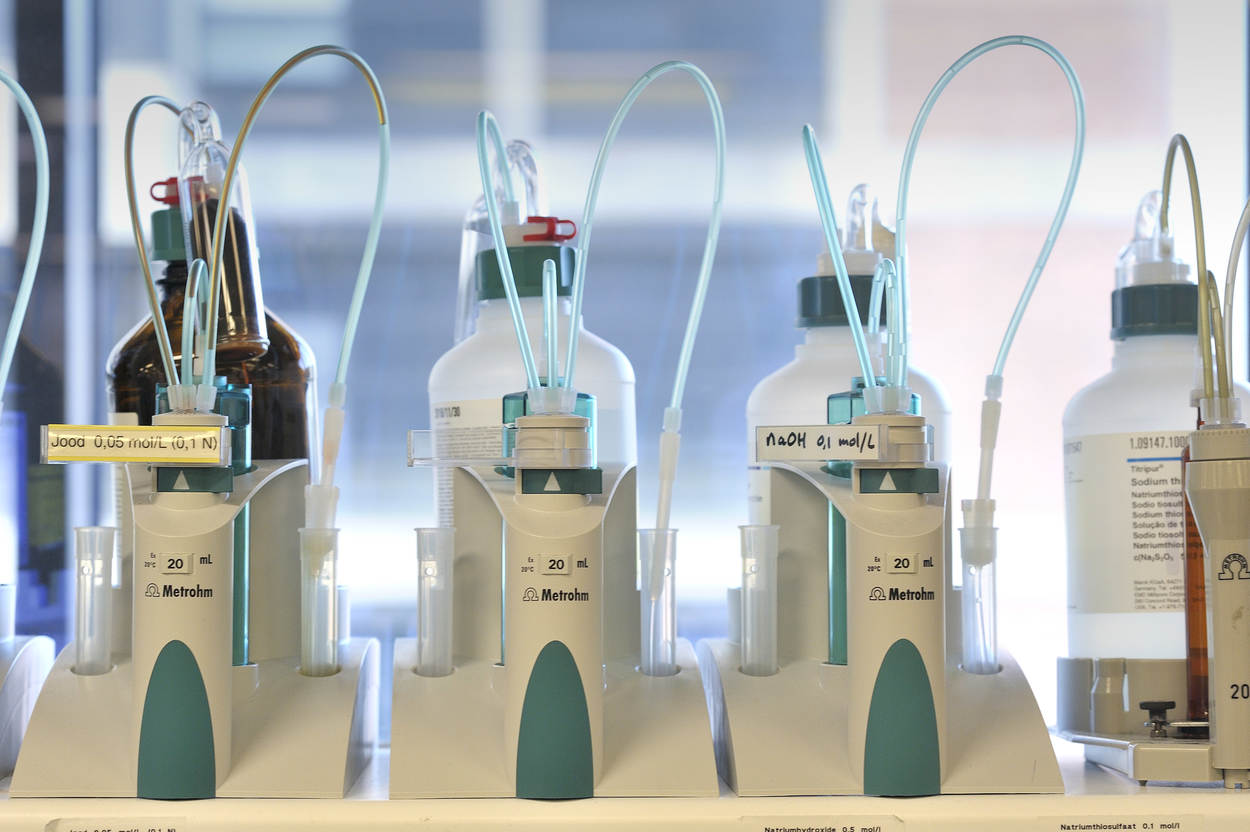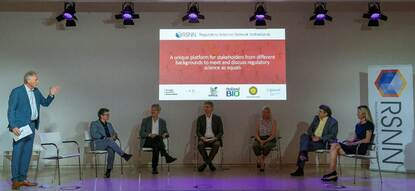
Helen Gatling: Testing the suitability of a structured substance database for pharmacovigilance purposes: an exploratory study about the role of structural alerts and reactive metabolites in drug toxicity
Project of Helen Gatling, Master Pharmacy student of Utrecht University. Helen did her research internship at the Medicines Evaluation Board (MEB) from February 2022 to July 2022. Her supervisors were Marcel Hoefnagel (MEB), Marjon Pasmooij (MEB) and Eugène van Puijenbroek (Lareb/University Medical Center Groningen).
I have been exploring relationships between molecular structure and adverse drug reactions using a structured substance database in the last five months.
Background
Pharmacovigilance (PV) is the discipline related to detecting, assessing, understanding, and preventing adverse reactions and other problems related to the use of medicinal products once a drug is admitted on the market. Especially idiosyncratic adverse drug reactions (IADRs) are hard to detect once a drug is marketed due to their low frequency and the lack of a clear pharmacological mechanism. It has been hypothesized that in some idiosyncratic reactions, reactive metabolite (RM) formation occurs due to structural features of the molecule (structural alerts, SA) that makes it susceptible to RM formation. Pre-marketing, the acknowledgement of the potential presence of a SA is essential. However, the knowledge is limited because they are hardly studied post-marketing. A way of finding drugs that contain a SA, is by using a structured substance database that can be queried for molecular structure. The objective of this study was to investigate the suitability of a structured substance database for exploring ADR-SA relationships.
Methods
The GSRS database was developed by the Global Ingredient Archival System (GINAS) initiative and contains the molecular structure, classification information and metabolites of compounds used in medicinal products. Using GSRS, five sub-studies were performed each investigating a pre-selected SA-ADR relationship. For four sub-studies, the SA-ADR relationship was described in published studies. The fifth sub-study investigated a newly discovered potential SA-ADR relationship that was identified during the explorations of the first sub-studies. For each study, a GSRS search was performed, and it was extracted if a specific drug-ADR combination was reported disproportionally in VigiLyze, the global database for Individual Case Safety Reports of the WHO. In addition, the summary of product characteristics (SmPC) was checked.
Results
It was shown that, based on a specific RM, GSRS contained sufficient information to highlight drugs that formed similar RMs or contained parts of the RM in their original structure. Secondly, the possibilities of searching for drugs containing structural varieties within one drug class were investigated and this showed the mediating effects of a specific substituent in the structure on the occurrence of ADRs. This analysis showed the potential usability of the GSRS for future PV research.
Additionally, it was demonstrated that GSRS could be used to find drugs with diverse therapeutic indications containing a pre-selected SA. Based on the SmPCs and PhV reporting rates, the involvement of this SA in the development of Steven-Johnson syndrome and methemoglobinemia was displayed.
Finally, a possible relationship between a SA that was discovered by looking at the reason behind the withdrawal of two fluoroquinolones and the ADR QT prolongation was described. Drugs containing the SA showed, with one exception, a high reporting rate for QT prolongation, whereas drugs that did not contain the SA did not.
Implications
This study shows that the GSRS database is a suitable tool for identifying drugs containing a SA. It can help PV research by finding structurally related drugs that share specific ADRs in pre- and post-marketing stages.

Femke de Vries: Patient preferences towards diabetic medication
Project of Femke de Vries, Master Management, Policy Analysis and Entrepreneurship in the Health and Life Sciences (MPA) student. Femke did her research internship at the Medicines Evaluation Board (MEB) from March 2022 to August 2022. Her supervisors were Sonia Roldan Muñoz (MEB), Sieta de Vries (University Medical Centre Groningen (UMCG)/MEB), Peter Mol (UMCG/MEB) and Nina Cohen (VU Amsterdam).
In August 2022, I completed my five-month internship at the MEB. During my internship I evaluated the usability of a recently developed patient decision aid about drug effects of type 2 diabetic treatments.
Background
Current medical practices aim to have a more patient centered approach. In the last years, research around the elicitation and inclusion of patient preferences in the different phases of drug development as well as on clinical and regulatory decisions is growing. Various studies have described how these type of studies might contribute to better treatment satisfaction, adherence, and, ultimately, better treatment outcomes. Eliciting patient preferences may be of highest interest for diseases with suboptimal achievement of treatment targets, such as type 2 diabetes mellitus (T2DM), where they are only met by approximately half of the T2DM patients. With the support of a decision aid focused on the characteristics of various treatment options, it may be possible to increase patients’ involvement and, thereby, contribute to incorporate their preferences into treatment decisions.
Therefore, we developed a decision aid consisting of an information leaflet and a preference elicitation exercise in which patients need to trade-off the different drug effects. The aim of my study was to evaluate the usability of the decision aid among T2DM patients.
Methodology
We conducted semi-structured interviews among T2DM patients until theoretical saturation was reached. The T2DM patients were at the moment or in the past under pharmacological treatment for T2DM. The questions of the interview were based on a structured framework, and included the concepts readability, reader’s interpretation, understandability and usability. We coded the interviews according to this framework using the program Atlas.ti 22. Both open and closed coding were conducted, which allowed for both an inductive and deductive approach during the analysis. Moreover, the decision aid was adapted during the interviews according to the patients’ feedback.
Results
A total of 10 interviews were conducted. Overall, the readability of the decision aid was perceived as good. Only a few specific terms were perceived as difficult. For example, the term ‘HbA1c’ was unfamiliar among some participants, and was adapted in the decision aid by including a short explanation of the term. Furthermore, most information was interpreted as intended, with the exception of some of the figures. We adjusted these figures by changing, for example, some of the colors, and it resulted in the correct interpretation in the subsequent interviews. However, the participants’ perception on the understandability was not always correct, as they sometimes struggled to explain with their own words some information that they had previously stated to understand. Lastly, after reading the leaflet and performing the exercise, the patients felt more informed about the treatment options and outcomes and they expressed their interest in using the decision aid when discussing treatment options with their healthcare professionals. However, they also expressed concerns about the implementation in practice, particularly about the lack of time from the healthcare professionals.
Conclusion
The decision aid was generally well understood and was considered a usable tool for patients to be well informed and facilitate the communication with their healthcare professional. Future studies are needed to examine the perspectives of healthcare professionals about the decision aid and whether and how they could incorporate the use of the decision aid in clinical practice. The insights gained from this study are useful for the further incorporation of patient preferences in treatment decisions as well as the drug development process.

Fatima Didouh: Evaluating whether modelling and simulation plays a role in the benefit risk discussion of paediatric medicinal products approved between 26 July 2008 and 10 January 2022
Project of Fatima Didouh, Master Pharmacy student of Utrecht University. She did her research internship at the Medicines Evaluation Board (MEB) from February 2022 to June 2022. Her supervisor was Jeroen Koomen (MEB).
In June 2022, I completed my six-month internship at the MEB. I evaluated whether modelling and simulation plays a role in the benefit risk discussion of paediatric medicinal products.
Background
Clinical trials in the paediatric population have significant limitations due to practical and ethical constraints around the data collection. This hampers evaluation of the benefit/risk balance and regulatory decision-making for this population. Some limitations of the limited data collection in paediatric patients can partially be overcome by conducting extrapolation studies based on modelling and simulation (M&S) techniques.
Aim
The purpose of this study is to evaluate if modeling and simulation studies play a role in the benefit risk discussion of paediatric medicines approved between 26 July 2008 and 10 January 2022.
Methods
This is a retrospective study and the European Public Assessment Reports (EPARs) of the European Medicines Agency, or EMA, were the primary source for this research. Each human medicinal product was screened for a paediatric investigation plan(s) (PIPs). Veterinary, generic, biosimilar and refused medicinal products were excluded as these products do not require a PIP.
Innovator medicinal products (withdrawn or authorized) with a marketing authorization after 26 July 2008 were included. Subsequently, the number of medicinal products with a PIP was evaluated. PIPs were categorized according to the presence/absence of an extrapolation study. Finally, for completed PIPs, the role of M&S in the benefit risk discussion was evaluated by looking for statements based on the extrapolation studies in the benefit risk discussion of corresponding EPARs. All collected data was graphed, tabulated and analysed using simple linear regression.
Results
A total of 1881 medicinal products were extracted from the EMA website. Veterinary (n=280), generic (n=265), biosimilar (n=82) and refused (n=52) medicinal products were excluded and also medicinal products with a marketing authorization prior to 26 July 2008 (n= 474). A total of 728 medicinal products were therefore eligible for inclusion for this research. Of these medicinal products, 175 lacked a PIP due to an obtained waiver (n=70), hybrid application (n=21), not recommended use/no relevant use (n=28), already submitted in the initial marketing application (n=21), already registered active component/informed consent application (n=30). From the medicinal products with a PIP (n=553), a total of 709 PIPs could be identified on the EMA website. Of the 709 PIPs, 180 (25%) PIPs requested an extrapolation study. We found a 4% annual increase (95% confidence interval: 1.7 to 6.0%, p= 0.002) in the number of extrapolation studies per PIP.
Of the 180 PIPs with extrapolation study, 37 PIPs were completed on 31 May 2022. As a result of one medicinal product having two different assessment reports, 38 reports were reviewed. After reviewing the benefit risk (B/R) discussion for these PIPs, 16 (59%) assessment reports issued a positive opinion based partially on the extrapolation studies and 10 (37%) assessment reports did not mention extrapolation studies in the B/R discussion. The medicinal products (n=11) with a completed PIP but no CHMP reports for the extension of the paediatric indication were not eligible. One medicinal product gained a negative B/R discussion opinion.
Discussion
In this study, it was anticipated that extrapolation studies play a large role in the regulatory decision-making process of medicinal products intended for use in paediatric patients. However, we found that only 180 of the 709 PIPs requested an extrapolation study. Furthermore, the requested extrapolation study was only discussed in the B/R discussion for only 16 out of the 38 reviewed reports with an extrapolation study, which suggests that the regulatory decision-making was for a majority not based on the data from extrapolation studies.









